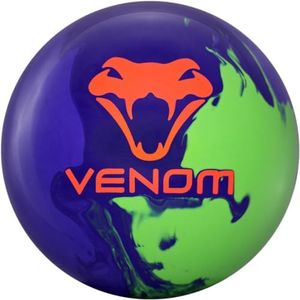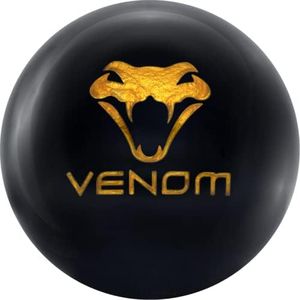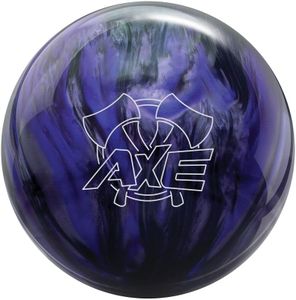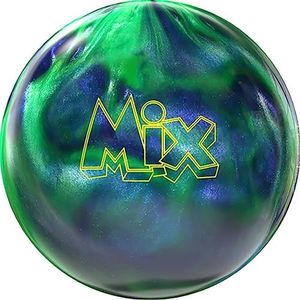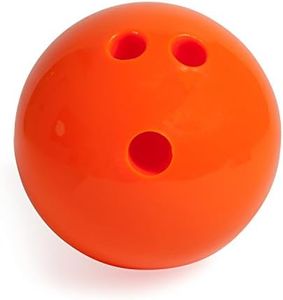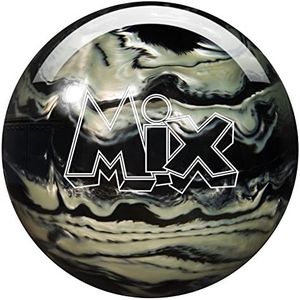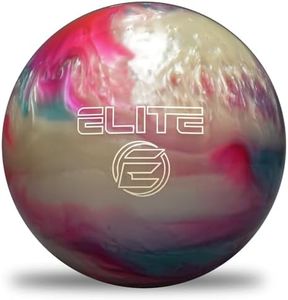We Use CookiesWe use cookies to enhance the security, performance,
functionality and for analytical and promotional activities. By continuing to browse this site you
are agreeing to our privacy policy
10 Best Bowling Balls
From leading brands and best sellers available on the web.Buying Guide for the Best Bowling Balls
Choosing a bowling ball is not just about picking one that looks good—it's about finding a ball that matches your style, your level of experience, and the way you play. A good ball can make your game more enjoyable and even improve your scores. Before you buy, think about how you bowl: your strength, your usual lane conditions, and the kind of movement you want the ball to make down the lane. The right choice will feel comfortable, help you control your shots, and suit your personal goals, whether you're just starting out or looking to up your game.WeightThe weight of a bowling ball is how heavy it feels when you lift and throw it, usually measured in pounds. This is important because a ball that's too heavy or too light can make bowling harder and less fun. Heavier balls (usually between 14 and 16 pounds) give more power and tend to knock down more pins, but they require more strength to control. Lighter balls (10 to 13 pounds) are easier to handle, especially for beginners, children, or people with less upper body strength. To pick the right weight, focus on what feels comfortable—you should be able to bowl multiple games without getting tired or losing control. A good test is to choose the heaviest ball you can comfortably throw several times in a row without strain.
Coverstock MaterialThe coverstock is the outer shell of the bowling ball, and it affects how the ball grips the lane surface. This is important because the right coverstock helps the ball react well to the lane and produces the kind of motion you like—straight, hooking, or somewhere in between. There are a few main types: plastic (also called polyester), urethane, and reactive resin. Plastic coverstocks are smooth and best for straighter shots, making them good for beginners. Urethane offers a little more friction and control, providing some hook. Reactive resin creates even more grip and is preferred by bowlers who want the ball to hook more, often used by experienced players. Pick a coverstock based on how much hook you want—straight for new players, or more hook as you develop skill and control.
Core TypeThe core is the inside shape of the bowling ball, and it influences how the ball rolls and reacts on the lane. Cores can be symmetrical or asymmetrical. Symmetrical cores make the ball roll more evenly and are easy to control, which is helpful for consistency and simpler play. Asymmetrical cores can make the ball move in a sharper, more powerful way, especially useful for advanced players who want special hooking action. For most beginners and intermediate bowlers, a symmetrical core is easier to use and control; as you gain experience, experimenting with asymmetric cores can offer more advanced play options.
Finger Hole Fit and Custom DrillingThe way the finger holes fit your hand is crucial for comfort, safety, and control. Proper fit reduces the risk of injury and gives you better control over your shots. Most bowling balls come un-drilled, so you can get them professionally drilled to match the size and spacing of your fingers. Some low-cost balls have pre-drilled holes, but these may not fit your hand well. If you bowl regularly, getting custom drilling is worth it—it makes the ball an extension of your hand and can improve your accuracy and comfort. If you’re just starting, you can use standard sizes, but as you get serious, consider custom drilling.
Surface FinishThe surface finish refers to how shiny or rough the outside of the bowling ball is, which affects how the ball interacts with the lane. A shiny or polished finish slides more and hooks less, which is better for dry lanes or when you want a straight shot. A sanded or matte finish grips the lane harder, helping the ball hook more, especially on oily lanes. Think about the types of lanes you usually bowl on—if lanes are often slick, a rougher surface can help, while polished surfaces suit drier lanes. Choose the finish that matches the most common lane condition you play on, or consider multiple balls if you bowl in many different settings.

